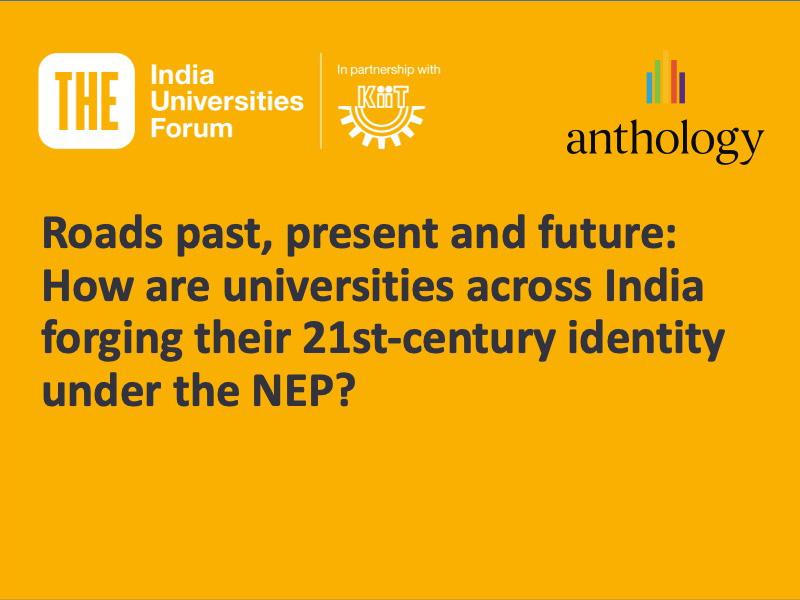
How Indian universities are progressing under the National Education Policy 2020

India’s National Education Policy (NEP) 2020 contains ambitious provisions for its universities to develop a unique national identity, embrace internationalisation and strengthen their multidisciplinary offerings to students. However, there are persistent challenges associated with all of these goals.
At a panel session held in partnership with Anthology at the 2023 Times Higher Education India Universities Forum, senior leaders analysed how the recommendations and implementation of NEP policies had affected Indian universities. They discussed what needed to change for institutions to better align with the NEP’s recommendations.
Saugata Bhaduri, professor at the Centre for English Studies at Jawaharlal Nehru University, criticised the current provision of multidisciplinary education, saying that many Indian institutions “have become so driven by professional and vocational needs [that they] invest only in certain disciplines that have tangible job opportunities”.
Vivek Iyer, vice-president of sales (APAC) at Anthology, agreed with Bhaduri, noting that Indian universities often took a “single-stream” approach. “For engineering, we have IIT [the Indian Institute of Technology], for management, we have IIMs [the Indian Institute of Management] and for medicine, we have AIIMS [All India Institute of Medical Sciences].”
Saikat Majumdar, professor of English and creative writing at Ashoka University, warned against developing curricula that were too narrow and only focused on in-demand subjects. “Obviously a developing nation needs engineers in a great magnitude, but it’s very clear that engineers who don’t have a wide set of skills are not going to keep up in a 21st-century economy,” he said. “You need social understanding, you need psychology, you need language, you need art, you need a lot of different kinds of things.”
Despite the NEP’s guidance, more could be done to improve the student experience. Indian universities needed to strengthen “this culture of putting the learner at the centre…to adopt a journey from an institute-centric to a learner-centric approach”, Iyer said.
Indian universities should focus on taking a more multidisciplinary approach to education and embracing internationalisation. This would expose students and staff alike “to international experiences [and] concepts” and boost the “internationalisation of our higher education…in terms of foreign campuses opening up in India”, Iyer added.
To promote multidisciplinary education and internationalisation at his institution, Majumdar said, Ashoka University was offering a liberal arts education to create “a well-rounded graduate…who has the linguistic and quantitative ability”. He reiterated that the liberal arts model had long existed in the Indian education tradition “and that is what has come alive in the formation of the NEP, which we are now trying to formulate”.
The panel:
- Saugata Bhaduri, professor, Centre for English Studies, Jawaharlal Nehru University
- Gitanjali Goswami, branded content manager (APAC), Times Higher Education (chair)
- Vivek Iyer, vice-president of sales (APAC), Anthology
- Saikat Majumdar, professor of English and creative writing, Ashoka University
- Srikant Srinivasan, associate dean of academics, Plaksha University
Find out more about Anthology.

